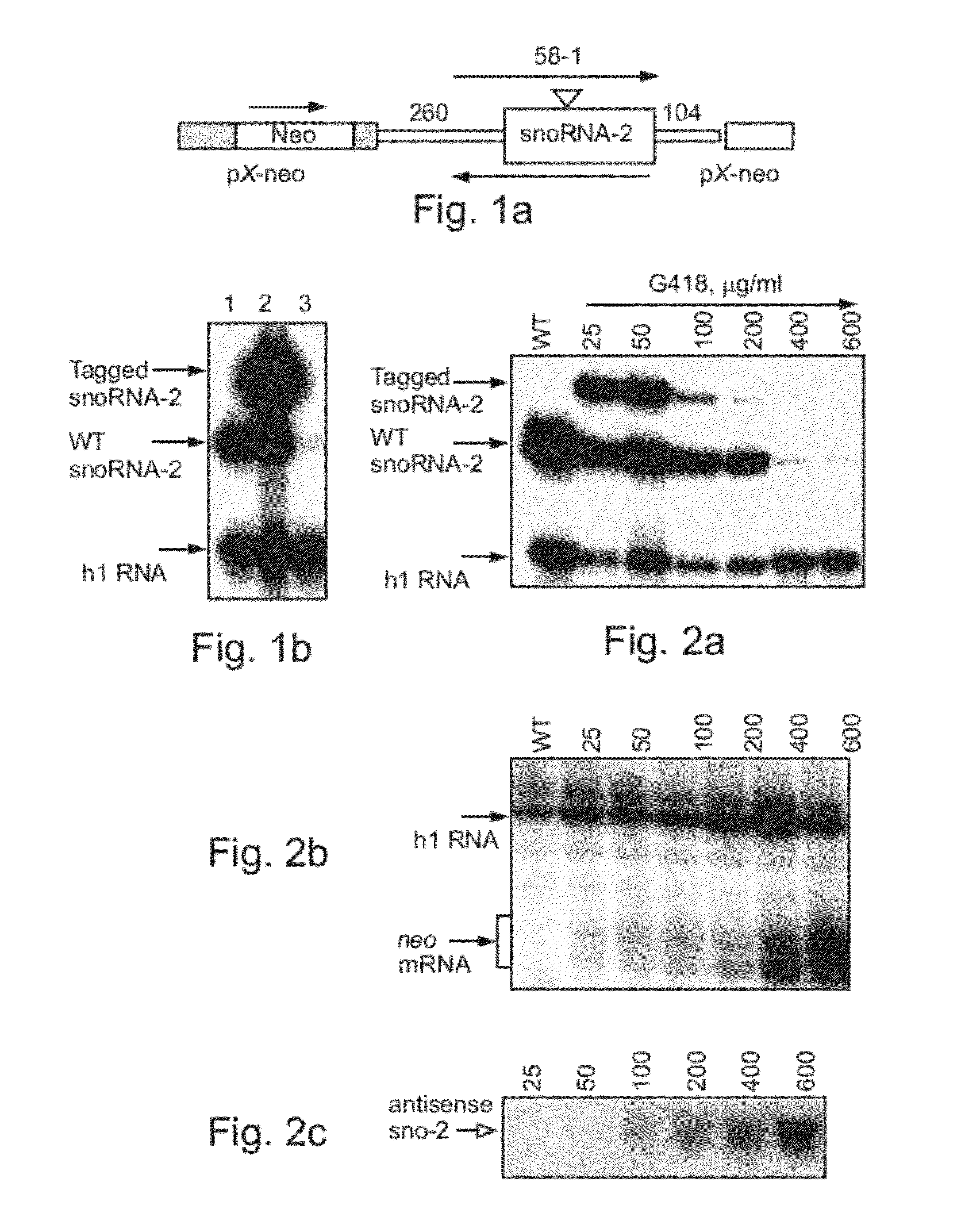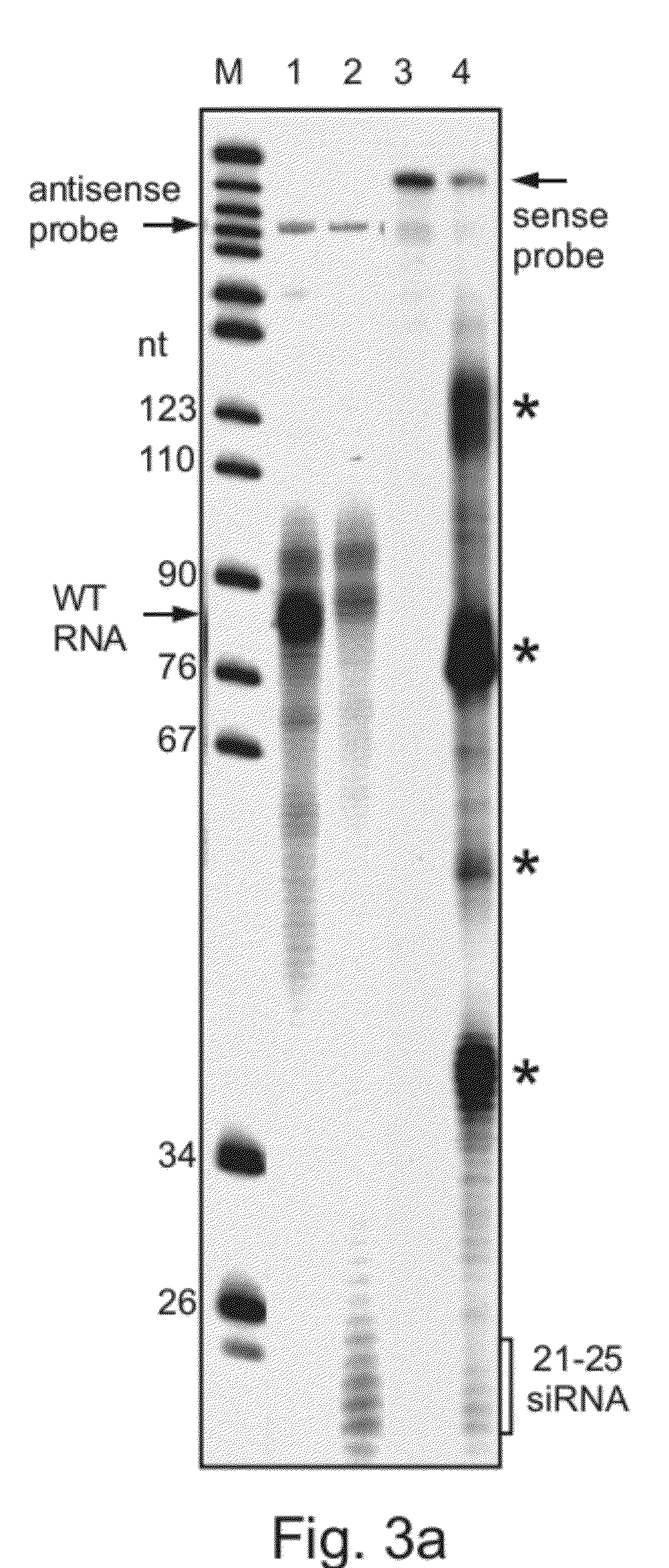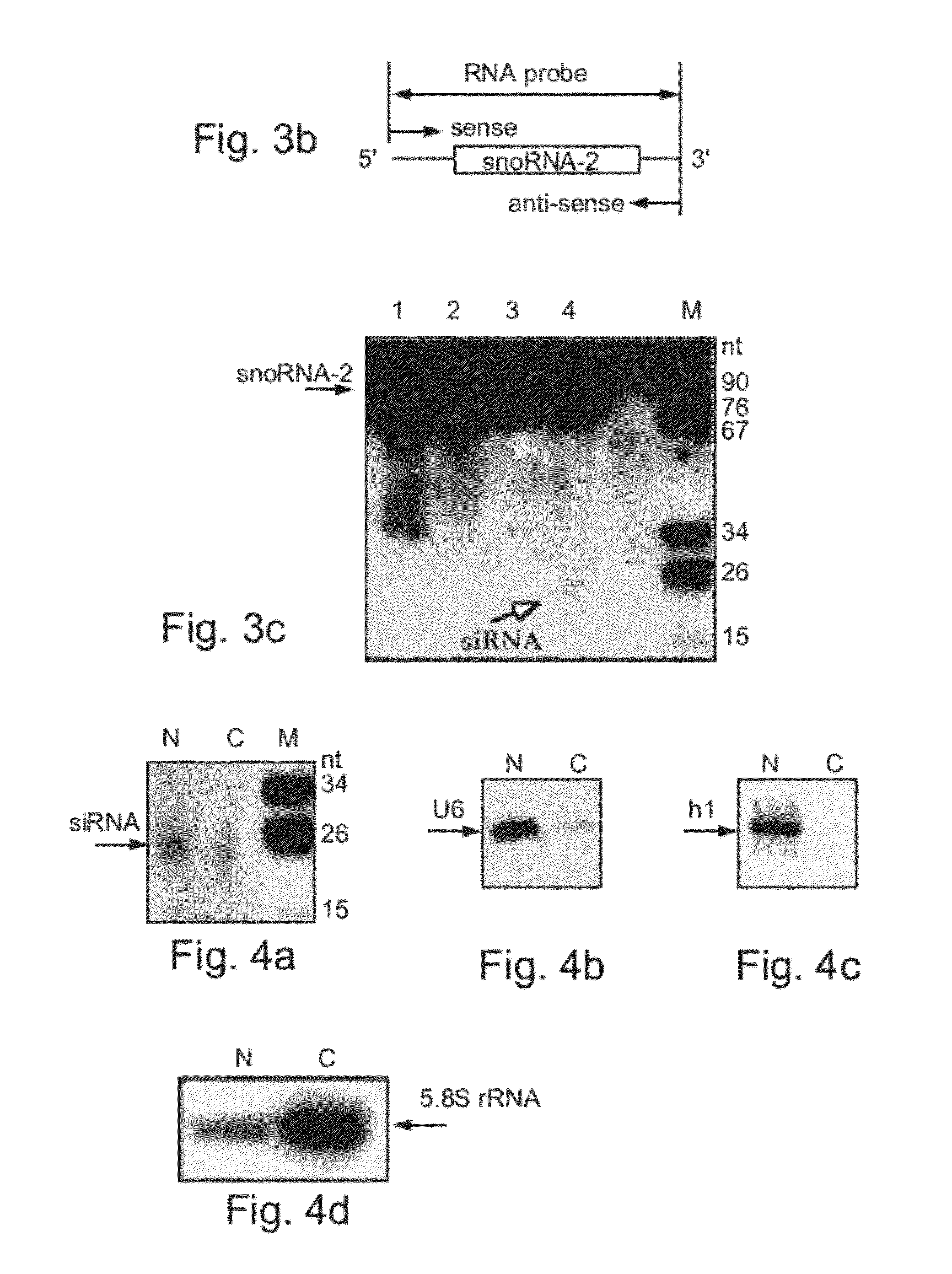SnoRNAi-small nucleolar RNA degradation by RNA interference in trypanosomatids
a small nucleolar and trypanosomatid technology, applied in the field ofsnorna specific sirnas, can solve the problems of increased telomere shortening and instability, the normal replication apparatus fails to complete the replication of the dna at the telomere, and the function of such rnas cannot be easily deciphered. , to achieve the effect of downregulating the level of small nuclear rna, downregulating the level of small nuclear
- Summary
- Abstract
- Description
- Claims
- Application Information
AI Technical Summary
Benefits of technology
Problems solved by technology
Method used
Image
Examples
example 1
The Level of snoRNA-2 Expression Varies with the Level of Anti-Sense snoRNA-2 Transcript
[0174]The expression of the tagged L. collosoma snoRNA-2 gene from an episomal vector is dependent on the orientation of the gene with respect to the resistant gene on the episome. Thus, when the tagged snoRNA gene is expressed in a transcriptional direction of the neo gene, the expression of the tagged gene is efficient. On the other hand, since episomal vectors in Leishmania are transcribed from both strands (Laban, A., et al., 1990. Nature 343, 572-574), the lack of expression of the tagged gene when cloned in the opposite was attributed to the differential efficiency of transcription from the two strands of the episomal vector. In order to search for a putative snoRNA promoter that will enhance transcription of the snoRNA gene when present in the opposite orientation, cell lines carrying the snoRNA-2 in two orientations were generated, as follows.
[0175]Experimental Results
[0176]Expression of ...
example 2
Silencing of snoRNA-2 is Mediated Via the Production of siRNAs
[0179]It has been recently suggested that antisense effects may result from the production of small interfering RNA (siRNA) molecules (e.g., the drosophila in vitro RNAi silencing system, see Zamore, P. D. et al., 2000, 101: 25-33). To examine whether the snoRNA-2 silencing effect observed using the snoRNA-2 antisense construct (i.e., when the snoRNA-2 gene is in the opposite direction to the neo gene) was a result of RNAi, snoRNA-2 silenced cells were subjected to an RNase protection assay and Northern blot analysis, as follows.
[0180]Experimental Results
[0181]SiRNA is detected in cells carrying the snoRNA-2 antisense construct—To search for the presence of siRNA in cells transfected with the snoRNA-2 antisense construct, RNA was subjected to an RNase protection assay. As is shown in FIG. 3a, small RNA fragments (20-26 nucleotides) were detected using the sense and antisense snoRNA-2 probes in cells transfected with the s...
example 3
Cellular Distribution of siRNAs
[0184]The prior arts teach that snoRNAs are transcribed and processed in the nucleoplasm and then migrate to the nucleolus where they function (Kiss, T. 2002. Cell 109: 145-148). However, it is unclear where does the snoRNA's silencing process take place. To follow the silencing process of snoRNAs the cellular distribution of the snoRNA-2-specific siRNAs was determined, as follows.
[0185]Experimental Results
[0186]SiRNAs specific to snoRNA-2 are present in both the cellular and nuclear compartments—To determine the cellular localization of snoRNA-2-specific siRNAs, RNA was extracted from the nuclear or cytoplasmic compartments of cells transfected with the snoRNA-2 antisense construct and was further subjected to Northern blot analysis using snoRNA-2 antisense probe. As is shown in FIG. 4a, while a major hybridization band corresponding to the snoRNA-2-specific siRNA was detected in the nuclear fraction, a fainter, yet the same size band, was detected in...
PUM
| Property | Measurement | Unit |
|---|---|---|
| thickness | aaaaa | aaaaa |
| size | aaaaa | aaaaa |
| pore size | aaaaa | aaaaa |
Abstract
Description
Claims
Application Information
 Login to View More
Login to View More - R&D
- Intellectual Property
- Life Sciences
- Materials
- Tech Scout
- Unparalleled Data Quality
- Higher Quality Content
- 60% Fewer Hallucinations
Browse by: Latest US Patents, China's latest patents, Technical Efficacy Thesaurus, Application Domain, Technology Topic, Popular Technical Reports.
© 2025 PatSnap. All rights reserved.Legal|Privacy policy|Modern Slavery Act Transparency Statement|Sitemap|About US| Contact US: help@patsnap.com



